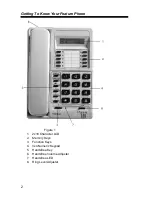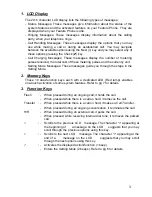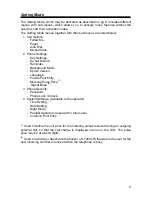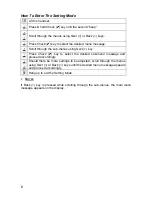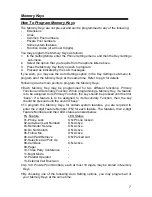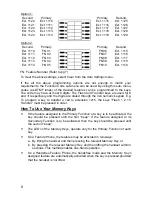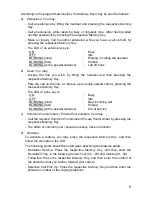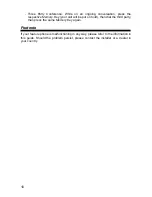
3
1. LCD Display
The 2x16 character LCD display lists the following types of messages:
-
Status Messages: These messages give information about the status of the
system features and the activated features on your Feature Phone. They are
displayed when your Feature Phone is idle.
-
Ringing Messages: These messages display information about the calling
party, when your telephone rings.
-
Call Handling Messages: These messages display the options that you may
use while making a call or during an established call. You may navigate
between the available options using the Next (>) key and you may select any of
these options pressing the Check (
9
9
9
9
) key.
-
Call Charging Messages: These messages display the number of metering
pulses received, the total cost of these metering pulses and the currency unit.
-
Setting Mode Messages: These messages guide you through the steps in the
Setting Mode
.
2. Memory
Keys
These 10 dual-function keys each with a dedicated LED (Red lamp) enables
one-touch activation of some system features. Refer to pg 7 for details.
3. Function
Keys
Flash :
-
When pressed during an ongoing call, it holds the call.
-
When pressed while there is a call on hold, it retrieves the call.
Transfer :
-
When pressed while there is a call on hold, it makes a
Call Transfer
.
-
When pressed during an ongoing conversation, it terminates the call.
H/R :
-
When pressed during an external call, it parks the call.
-
When pressed while receiving internal dial tone, it retrieves the parked
call.
< :
-
Scrolls to the previous LCD message. The character “<“ appearing at
the beginning of a message on the LCD suggests that you may
scroll through the previous options using this key.
> :
-
Scrolls to the next LCD message. The character “>“ appearing at the
end of a message on the LCD suggests that you may scroll
through the next options using this key.
9
:
-
Activates the displayed action/function (1 beep).
-
Enters the
Setting Mode
(2 beeps). Refer to pg 6 for details.


